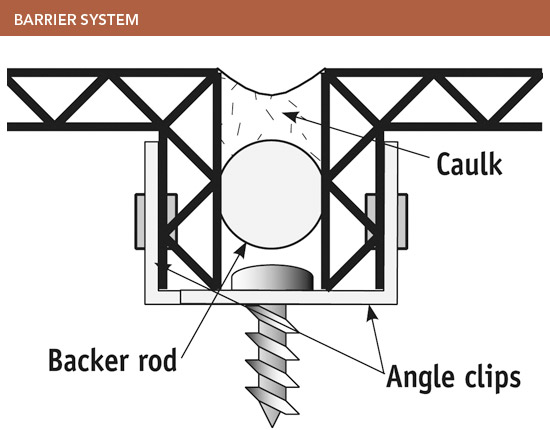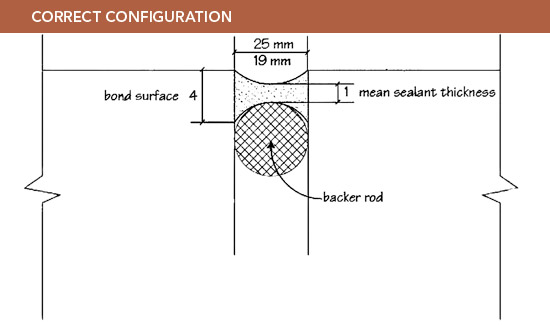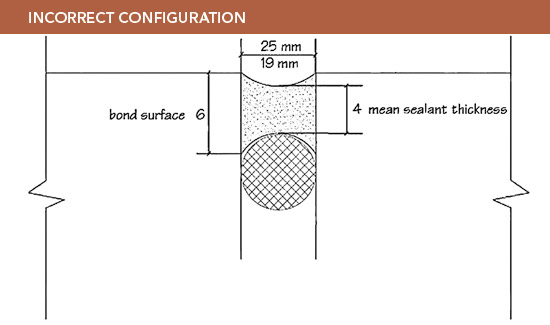Barrier vs. Rainscreen Exteriors
• Pressure-equalized rainscreens don't rely on sealants at joints to keep water out. Instead the wall is designed with a series of pressurized compartments. These compartments usually consist of a drainage plane that is vented at the top and bottom and closed on the sides. When wind blows against the wall, the compartments fill with air. But because the sides are closed, and the airflow through the vents is limited, the compartments can only fill up until the air pressure matches the pressure of the incoming wind. At this point, the air inside the compartment essentially pushes back. When the wind subsides, the pressurized air in the compartments will flow out the vent until the pressure inside the compartment again matches the outside pressure. As long as the pressure on each side of the cladding is the same, there is no driving force for air and water to penetrate the cladding.
Which approach is best for any given project largely depends on the type of materials chosen for the façade. In addition, this critical design decision will also be affected by other factors, not least of which are the project budget and the climate. To understand all the issues at stake, let's explore each system further.
Barrier Systems
In order for a barrier system to work, it's critical that the cladding material be impervious to moisture. If the cladding absorbs moisture, that moisture must be managed. A single-plane approach will not be feasible.
 |
In a barrier system, caulk and backer rod form the seal between two composite metal panels. Illustration courtesy of Laminators Inc. |
In addition, the joints between cladding members must be sealed, and that seal must be maintained over time. Any joint exposed to the elements will be more likely to shrink and crack over time, primarily due to the damaging effects of ultraviolet radiation from sunlight.
Installation is critical. Face seals, in particular, must be executed with exacting care. Caulk beads need to conform closely to the profile, as depicted in the illustration on the following page. Just using backer rod is not enough. A misapplication as simple as too thick a bead of caulk, as shown in the illustration above, can result in premature failure of the seal. Also, to ensure a strong bond between the sealant and the cladding materials, surfaces and edges should be clean, dry, and free of all contaminants such as protective coatings, oils, grease, soap or detergent films, water, and dust. This doesn't happen on jobsites unless the installer takes great care.
 |
The correct shape for caulk is hour glass with a ratio of bond surface to mean thickness of about 4:1. |
 |
If the backer rod is placed too deep, the caulk will be too thick, as shown in this illustration of incorrect caulk configuration. Illustrations courtesy of Canadian Precast/Prestressed Concrete Institute |









